

News
SpaceX’s next Starship prototype is already closing in on its first tests
Continuing a trend of massive steel rockets built in a matter of days and weeks instead of months, SpaceX’s next Starship prototype is already closing in on its first tests.
SpaceX’s newest vehicle is set to pick up where the third full-scale Starship prototype – coincidentally known as SN3 – left off after operator error lead to its premature destruction on April 3rd. Now a pile of scrap metal, that ship only made it partway through cryogenic proof testing when its upper tank – almost fully filled with chemically-neutral liquid nitrogen – toppled over and pulled the rest of the prototype with it. With (hopefully) improved test procedures, Starship SN4 is now set to carry that torch forward.
Following the late Starship SN1 and SN3 prototypes, SN4 is on track to be the third full-scale, functional Starship prototype built in a handful of weeks thanks to major factory upgrades SpaceX has completed in recent months. While the loss of any particular prototype is undoubtedly a setback each time it happens, such a high rate and (apparently) low cost of production means that no single failure should be a major disruption, allowing SpaceX to iterate incredibly quickly as it learns from a flurry of real-world tests.
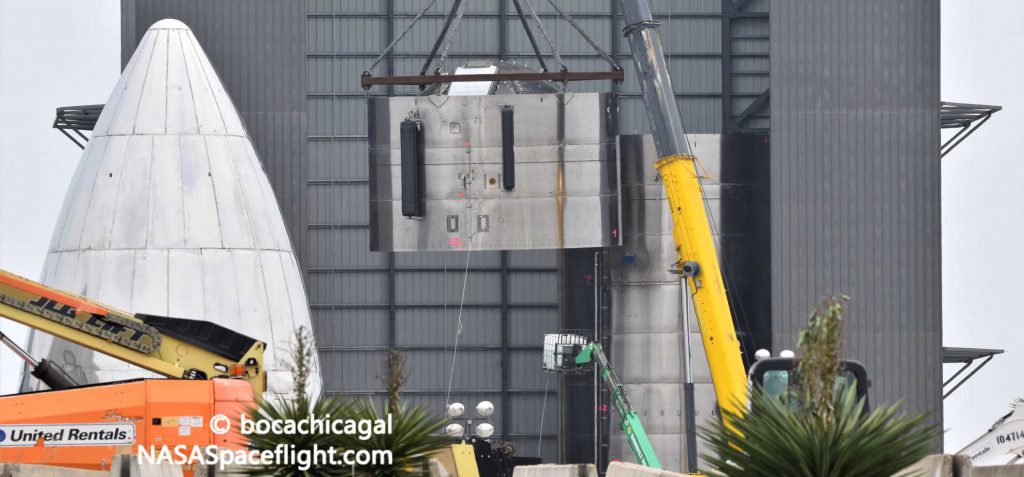
Like SN3, SpaceX’s next prototype will soon be fully stacked and transported down the road from the factory to a nearby launch and test facility, both situated directly on the South Texas Gulf Coast. Based on SN1 and SN3, SN4 could be just a week or so away from that transport milestone. SN3, for example, reached Starship SN4’s current state of assembly around March 20th. Eight days later, the vehicle was moved to the launch pad for its first tests.
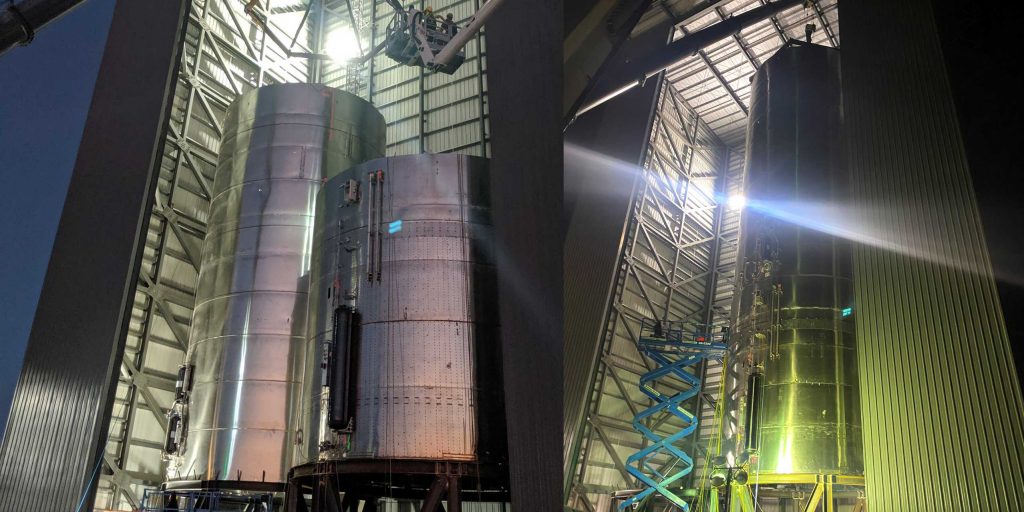
On April 12th, SpaceX technicians flipped Starship SN4’s aft-most section, doubling as a bottom dome of its liquid oxygen tank and a mounting point for three Raptor engines. Starship SN3 passed the same point around March 18th, just ten days before it was moved to the launch pad. Per SN3’s assembly schedule, it should be just 2-3 days before SpaceX wraps up Starship SN4’s engine section by adding another two rings, followed by the engine section’s integration with the rest of the rocket approximately 5-7 days from now.
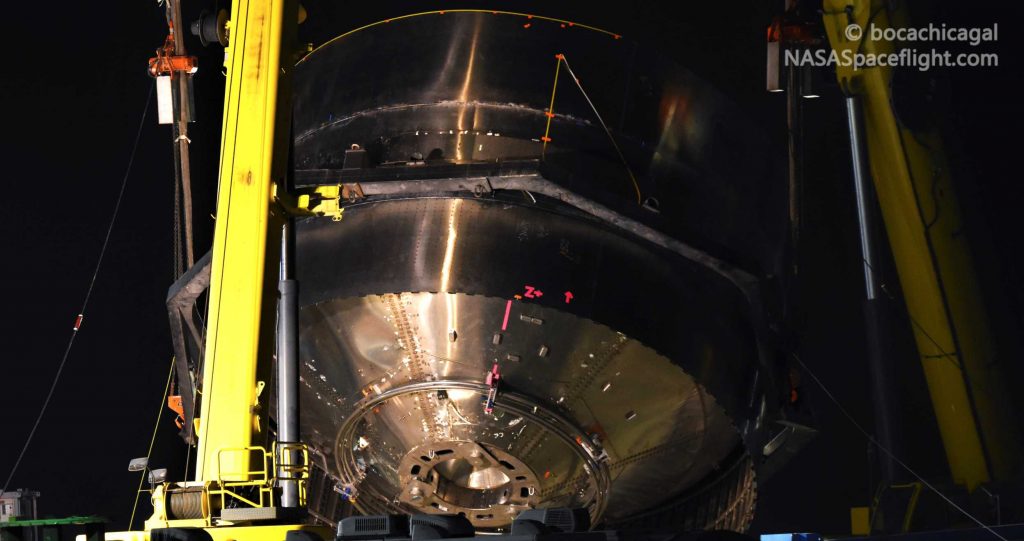
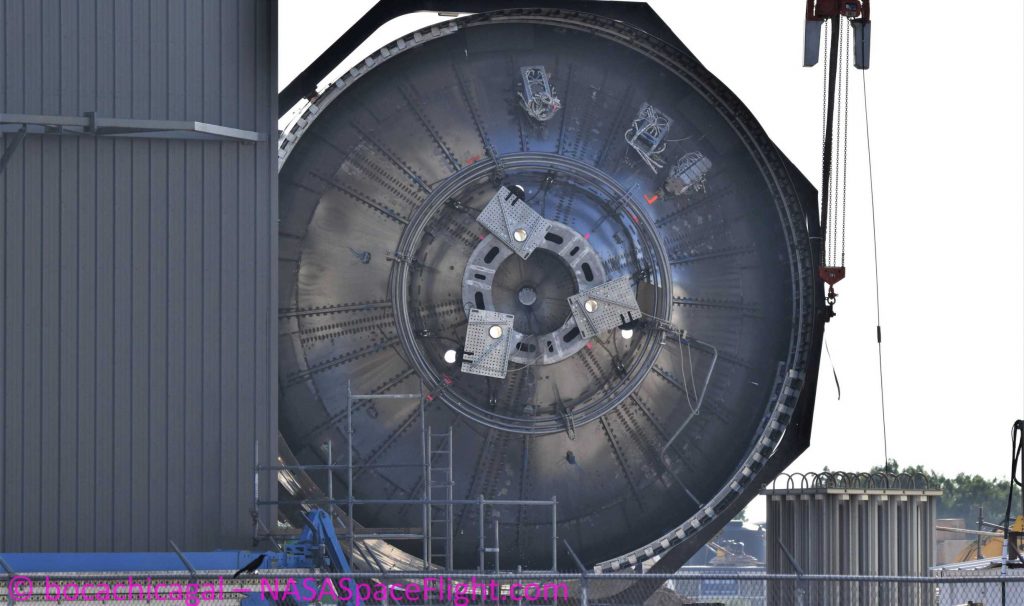
Based on Starship SN3’s behavior before a badly-designed test triggered the series of events that destroyed it, the ship appeared to be performing extremely well with its upper (methane) tank almost completely full of super-cool liquid nitrogen. If Starship SN4 does a similarly good job and makes it through the rest of the test that SN3 was unable to, SpaceX has three Raptors already tested and ready to go for their first triple-engine static fire ever.
At this point, those engines are simply waiting in a nearby hangar for a Starship prototype to be declared flight (or at least static fire) worthy. Even more excitingly, should both the engines and the Starship in question perform flawlessly during those tests, the first flights are expected to follow very soon after. Whether it’s able to summit that particular hurdle, Starship SN4’s current rate of production suggests that the ship will be ready to kick off testing later this month, perhaps less than three weeks after its predecessor kicked the bucket. Stay tuned!

News
Tesla FSD Supervised ride-alongs in Europe begin in Italy, France, and Germany
The program allows the public to hop in as a non-driving observer to witness FSD navigate urban streets firsthand.

Tesla has kicked off passenger ride-alongs for Full Self-Driving (Supervised) in Italy, France and Germany. The program allows the public to hop in as a non-driving observer to witness FSD navigate urban streets firsthand.
The program, detailed on Tesla’s event pages, arrives ahead of a potential early 2026 Dutch regulatory approval that could unlock a potential EU-wide rollout for FSD.
Hands-Off Demos
Tesla’s ride-along invites participants to “ride along in the passenger seat to experience how it handles real-world traffic & the most stressful parts of daily driving, making the roads safer for all,” as per the company’s announcement on X through its official Tesla Europe & Middle East account.
Sign-ups via localized pages offer free slots through December, with Tesla teams piloting vehicles through city streets, roundabouts and highways.
“Be one of the first to experience Full Self-Driving (Supervised) from the passenger seat. Our team will take you along as a passenger and show you how Full Self-Driving (Supervised) works under real-world road conditions,” Tesla wrote. “Discover how it reacts to live traffic and masters the most stressful parts of driving to make the roads safer for you and others. Come join us to learn how we are moving closer to a fully autonomous future.”
Building trust towards an FSD Unsupervised rollout
Tesla’s FSD (Supervised) ride-alongs could be an effective tool to build trust and get regular car buyers and commuters used to the idea of vehicles driving themselves. By seating riders shotgun, Tesla could provide participants with a front row seat to the bleeding edge of consumer-grade driverless systems.
FSD (Supervised) has already been rolled out to several countries, such as the United States, Canada, Australia, New Zealand, and partially in China. So far, FSD (Supervised) has been received positively by drivers, as it really makes driving tasks and long trips significantly easier and more pleasant.
FSD is a key safety feature as well, which became all too evident when a Tesla driving on FSD was hit by what seemed to be a meteorite in Australia. The vehicle moved safely despite the impact, though the same would likely not be true had the car been driven manually.
News
Swedish union rep pissed that Tesla is working around a postal blockade they started
Tesla Sweden is now using dozens of private residences as a way to obtain license plates for its vehicles.

Two years into their postal blockade, Swedish unions are outraged that Tesla is still able to provide its customers’ vehicles with valid plates through various clever workarounds.
Seko chairman Gabriella Lavecchia called it “embarrassing” that the world’s largest EV maker, owned by CEO Elon Musk, refuses to simply roll over and accept the unions’ demands.
Unions shocked Tesla won’t just roll over and surrender
The postal unions’ blockade began in November 2023 when Seko and IF Metall-linked unions stopped all mail to Tesla sites to force a collective agreement. License plates for Tesla vehicles instantly became the perfect pressure point, as noted in a Dagens Arbete report.
Tesla responded by implementing initiatives to work around the blockades. A recent investigation from Arbetet revealed that Tesla Sweden is now using dozens of private residences, including one employee’s parents’ house in Trångsund and a customer-relations staffer’s home in Vårby, as a way to obtain license plates for its vehicles.
Seko chairman Gabriella Lavecchia is not pleased that Tesla Sweden is working around the unions’ efforts yet again. “It is embarrassing that one of the world’s largest car companies, owned by one of the world’s richest people, has sunk this low,” she told the outlet. “Unfortunately, it is completely frivolous that such a large company conducts business in this way.”
Two years on and plates are still being received
The Swedish Transport Agency has confirmed Tesla is still using several different workarounds to overcome the unions’ blockades.
As noted by DA, Tesla Sweden previously used different addresses to receive its license plates. At one point, the electric vehicle maker used addresses for car care shops. Tesla Sweden reportedly used this strategy in Östermalm in Stockholm, as well as in Norrköping and Gothenburg.
Another strategy that Tesla Sweden reportedly implemented involved replacement plates being ordered by private individuals when vehicles change hands from Tesla to car buyers. There have also been cases where the police have reportedly issued temporary plates to Tesla vehicles.
News
Czech Deputy excited for Tesla FSD, hints at Transport Committee review
The ANO party lawmaker shared his thoughts about FSD in a post on social media platform X.
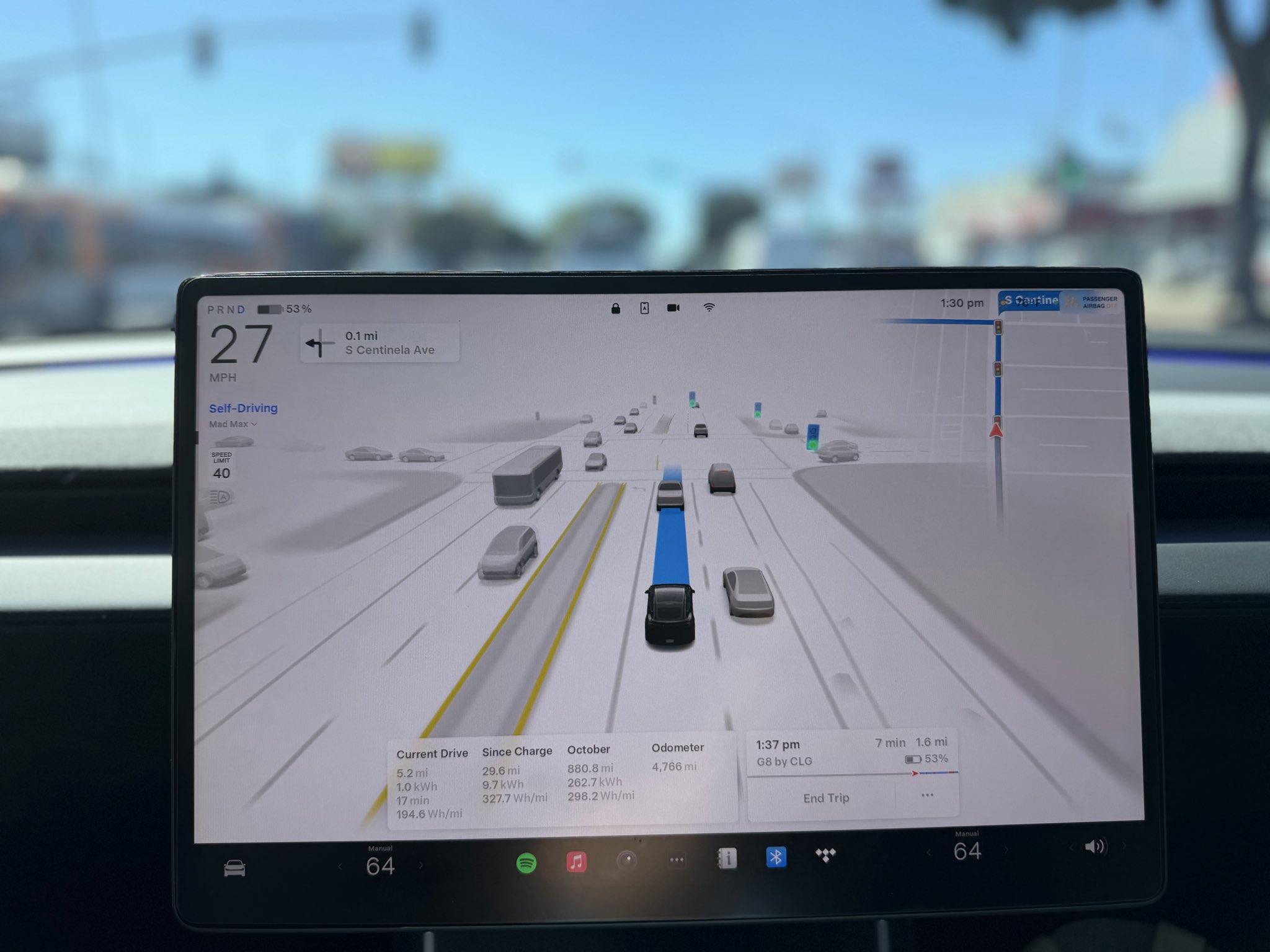
Martin Kolovratník, a Czech Republic Chamber of Deputies member, has expressed his excitement for Tesla’s Full Self-Driving (FSD) after an apparent constituent called for a quick approval for the advanced safety system.
The ANO party lawmaker, who drives both diesel and EV, shared his thoughts about the matter in a post on social media platform X.
The official’s initial statements
Kolovratník kicked off the exchange with a post outlining his coalition’s efforts to scrap highway toll exemptions for electric vehicles and plug-ins starting in 2027.
“Times have changed. Electric vehicles are no longer a fringe technology, but a full-fledged part of operations. And if someone uses the highway network, they should follow the same rules as everyone else. That’s the basis of fairness,” he wrote.
He emphasized equity over ideology, noting his personal mix of diesel and electric driving. “For this reason, there is no reason to continue favoring one technology at the expense of another… It’s not about ideology, it’s about equal conditions. That’s why we clearly agreed within the new coalition: the exemption for electric vehicles and plug-ins will end in 2027. The decision is predictable, understandable, and economically sound.”
Tesla FSD enthusiasm
The conversation pivoted to Tesla’s FSD when X user @robotinreallife, who seems to be one of the official’s constituents, replied that other matters are more important than ending highway exemptions for EVs.
“I’m happy to pay for the highway, but I have a question about a much more fundamental matter: The Netherlands will approve the operation of Tesla FSD in February 26, a technology that has been proven to reduce accidents. The Czech Republic has the option to immediately recognize this certification. Do you plan to support this step so that we don’t unnecessarily delay?” the X user asked.
Kolovratník responded promptly, sharing his own excitement for the upcoming rollout of FSD. “I know about it. I like it and it seems interesting to me. Once we set up the committees and subcommittees, we’ll open it right away in that transport one. Thanks for the tip, I’ll deliver the report,” the official noted in his reply on X.
Kolovratník’s nod to FSD hints at the system’s potentially smooth rollout to Czechia in the coming year. With the Netherlands possibly greenlighting FSD (Supervised) in early 2026, Kolovratník’s commitment could accelerate cross-border certification, boosting FSD’s foray into Europe by a notable margin.









